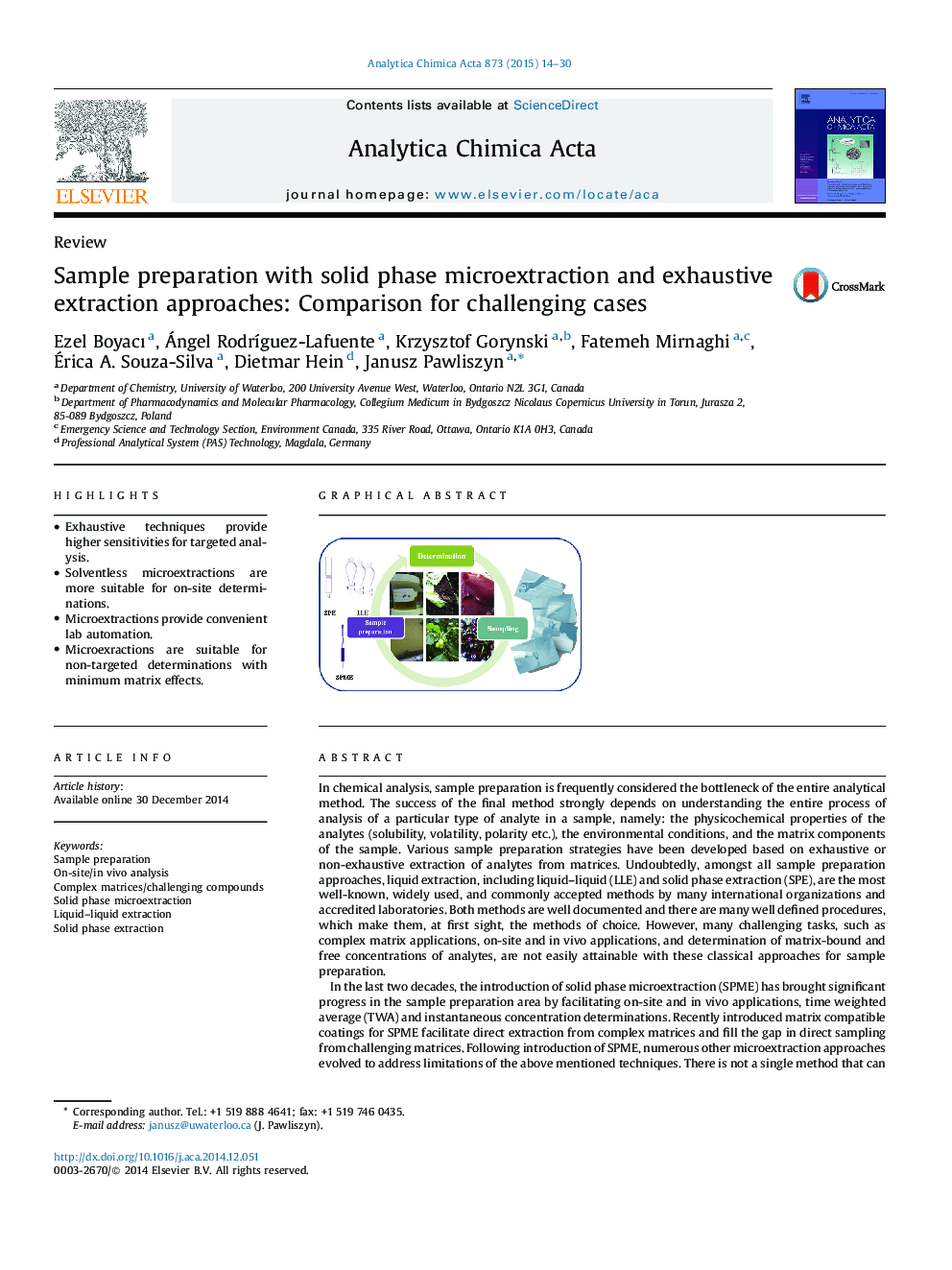| Article ID | Journal | Published Year | Pages | File Type |
|---|---|---|---|---|
| 1163816 | Analytica Chimica Acta | 2015 | 17 Pages |
•Exhaustive techniques provide higher sensitivities for targeted analysis.•Solventless microextractions are more suitable for on-site determinations.•Microextractions provide convenient lab automation.•Microexractions are suitable for non-targeted determinations with minimum matrix effects.
In chemical analysis, sample preparation is frequently considered the bottleneck of the entire analytical method. The success of the final method strongly depends on understanding the entire process of analysis of a particular type of analyte in a sample, namely: the physicochemical properties of the analytes (solubility, volatility, polarity etc.), the environmental conditions, and the matrix components of the sample. Various sample preparation strategies have been developed based on exhaustive or non-exhaustive extraction of analytes from matrices. Undoubtedly, amongst all sample preparation approaches, liquid extraction, including liquid–liquid (LLE) and solid phase extraction (SPE), are the most well-known, widely used, and commonly accepted methods by many international organizations and accredited laboratories. Both methods are well documented and there are many well defined procedures, which make them, at first sight, the methods of choice. However, many challenging tasks, such as complex matrix applications, on-site and in vivo applications, and determination of matrix-bound and free concentrations of analytes, are not easily attainable with these classical approaches for sample preparation.In the last two decades, the introduction of solid phase microextraction (SPME) has brought significant progress in the sample preparation area by facilitating on-site and in vivo applications, time weighted average (TWA) and instantaneous concentration determinations. Recently introduced matrix compatible coatings for SPME facilitate direct extraction from complex matrices and fill the gap in direct sampling from challenging matrices. Following introduction of SPME, numerous other microextraction approaches evolved to address limitations of the above mentioned techniques. There is not a single method that can be considered as a universal solution for sample preparation. This review aims to show the main advantages and limitations of the above mentioned sample preparation approaches and the applicability and capability of each technique for challenging cases such as complex matrices, on-site applications and automation.
Graphical abstractFigure optionsDownload full-size imageDownload as PowerPoint slide
